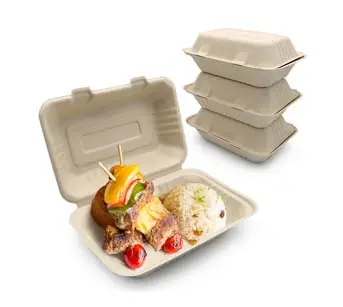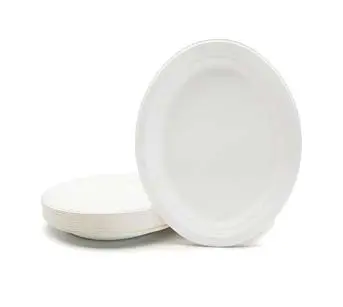Introduction to Compostable Lunch Trays
Definition and Purpose of Compostable Lunch Trays
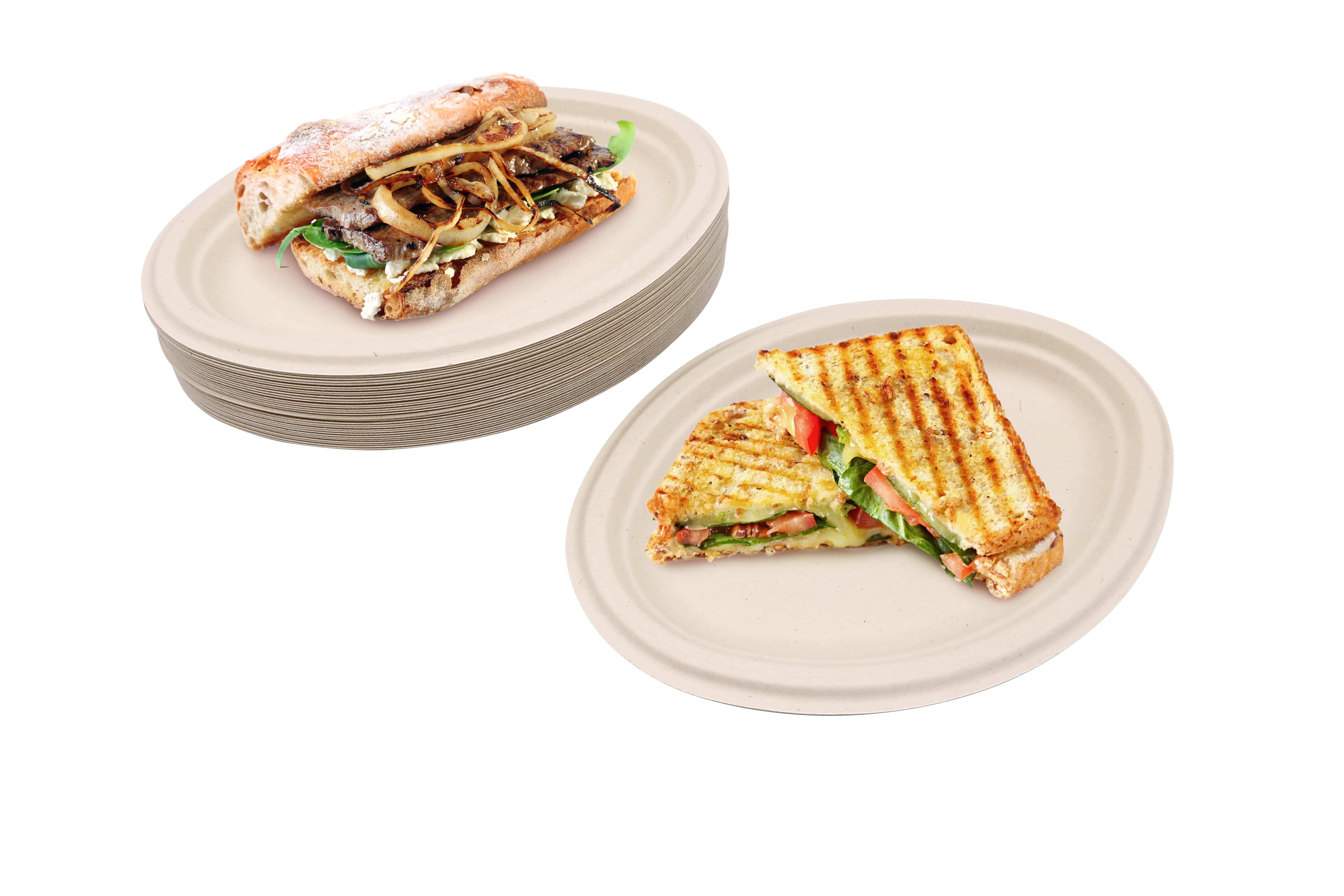
Compostable lunch trays serve as eco-friendly alternatives to traditional disposable trays, which generate significant waste and contribute to environmental degradation. These trays are specifically designed to be composted, meaning they can break down into organic matter in a composting facility within a reasonable timeframe, typically under 180 days.
Unlike non-compostable alternatives, such as plastic or Styrofoam trays that persist in landfills for hundreds of years, compostable lunch trays offer a sustainable solution that aligns with the principles of circular economy. The primary purpose of compostable lunch trays is twofold: minimizing waste generation and reducing the carbon footprint associated with food packaging.
By utilizing these trays, consumers can actively participate in reducing the volume of waste sent to landfills while lowering greenhouse gas emissions linked to conventional manufacturing processes.
Furthermore, using compostable lunch trays helps promote the concept of sustainability throughout the food industry by compelling manufacturers and businesses to adopt environmentally responsible practices.
Importance of Sustainable Packaging in the Food Industry
Sustainable packaging has emerged as a vital aspect within the food industry due to growing concerns about environmental conservation and resource depletion. The demand for more sustainable packaging options has intensified as consumers become increasingly aware of the negative impacts caused by excessive plastic use and improper disposal methods. In this context, compostable lunch trays play a crucial role by offering an alternative that aligns with sustainability objectives.
These trays address several environmental challenges simultaneously: conserving natural resources, reducing reliance on fossil fuels used in manufacturing conventional plastics, minimizing pollution caused by plastic waste accumulation, and mitigating climate change by cutting down on carbon emissions. Moreover, sustainable packaging solutions like compostable lunch trays present an opportunity for businesses to align themselves with consumer values centered around ecological stewardship.
By adopting such packaging options, companies can demonstrate their commitment to environmental responsibility, enhancing their brand image and attracting a growing segment of conscious consumers who prioritize sustainability in their purchasing decisions. Overall, compostable lunch trays serve as a tangible manifestation of the food industry's transition towards sustainable practices and offer an effective means of reducing waste while promoting environmental well-being.
Understanding Compostability
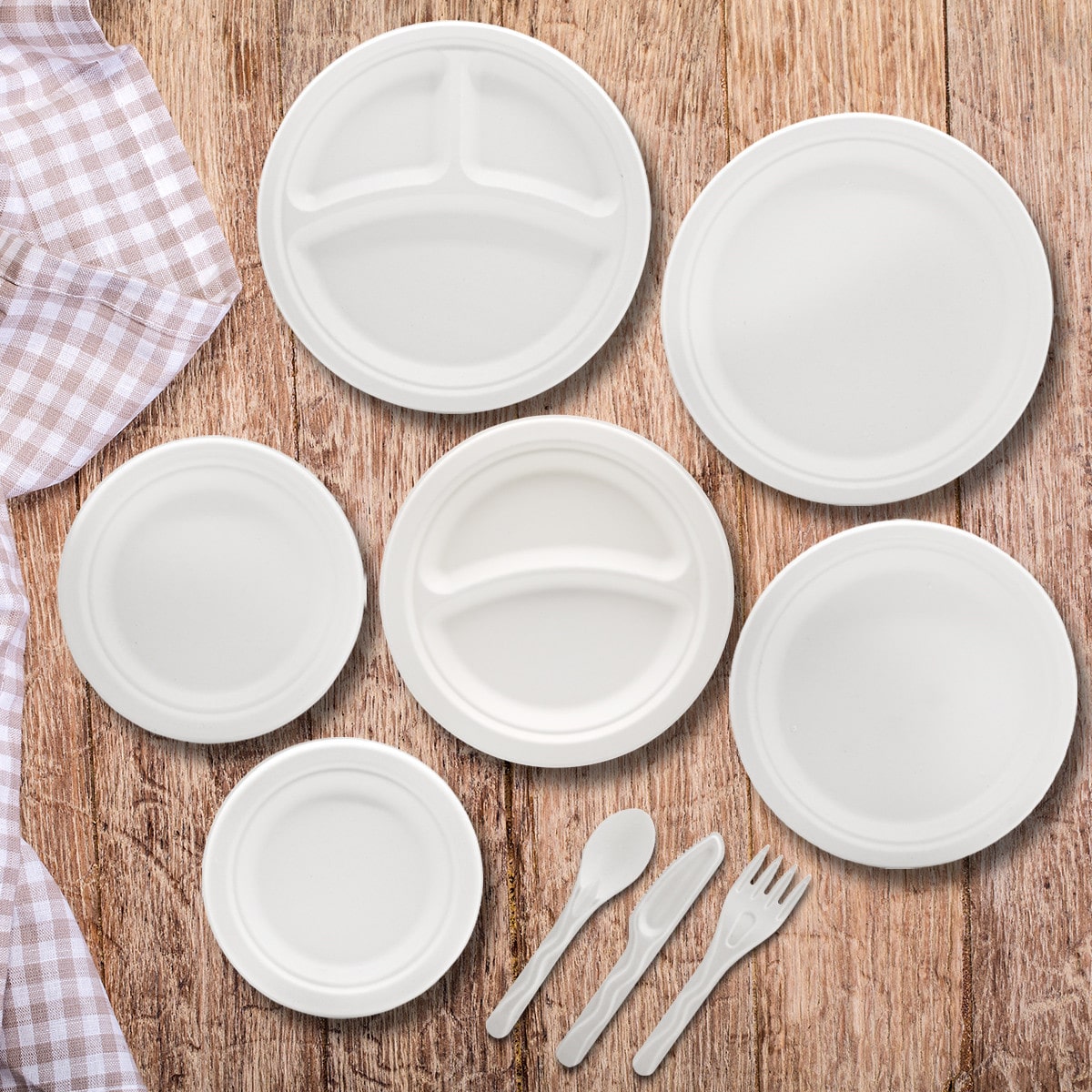
Definition of Compostability and its Criteria
Compostability refers to the ability of a material to undergo decomposition under controlled conditions, resulting in the formation of nutrient-rich compost. To be considered compostable, a material must meet specific criteria outlined by industry standards.
These criteria typically include factors such as biodegradability, disintegration rate, absence of toxic substances, and contribution to the quality of the resulting compost. One key criterion for compostability is biodegradability.
A material is considered biodegradable if it can be broken down by microorganisms into simpler compounds such as water, carbon dioxide, and biomass. However, it is important to note that not all biodegradable materials are compostable.
Composting requires specific conditions like adequate temperature, moisture levels, and microbial activity that promote efficient degradation. In addition to biodegradability, another crucial criterion for compostable materials is their disintegration rate.
Compostable products should break down within a reasonable timeframe during composting processes. The exact time frame depends on the type of material; some may decompose within a few weeks while others take several months.
Differentiating between Biodegradable and Compostable Tary With Lid
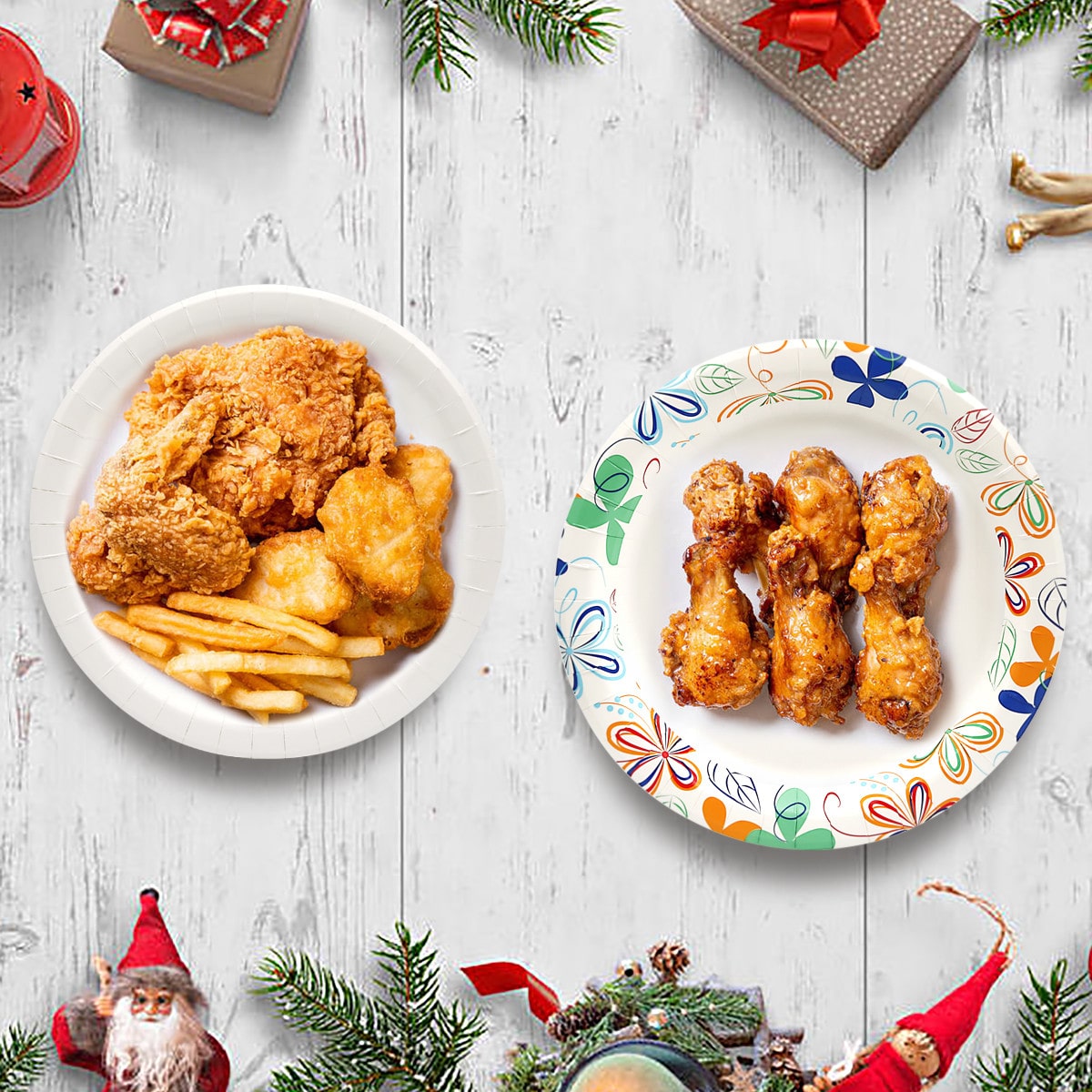
Although frequently used interchangeably, there is a significant distinction between biodegradable and compostable materials. Biodegradable substances can degrade through natural processes over time but do not necessarily result in beneficial end-products like compost. In contrast, compostable materials not only break down but also provide valuable nutrients for soil enrichment.
It's important to highlight this distinction because many consumers mistakenly assume that any product labeled as "biodegradable" automatically qualifies as environmentally friendly or suitable for composting. However, without adhering to specific compositional requirements and undergoing rigorous testing processes according to recognized standards (such as ASTM D6400 or EN13432), the claims of biodegradability may not guarantee actual compostability.
Therefore, when choosing sustainable packaging options like compostable lunch trays, it is crucial to look for certifications from reputable organizations like the Biodegradable Products Institute (BPI) or the Compost Manufacturing Alliance (CMA). These certifications ensure that the product meets strict compostability criteria, thus enabling consumers to make informed decisions while minimizing their environmental impact.
Benefits of Using Compostable Lunch Trays
Environmental Impact Reduction
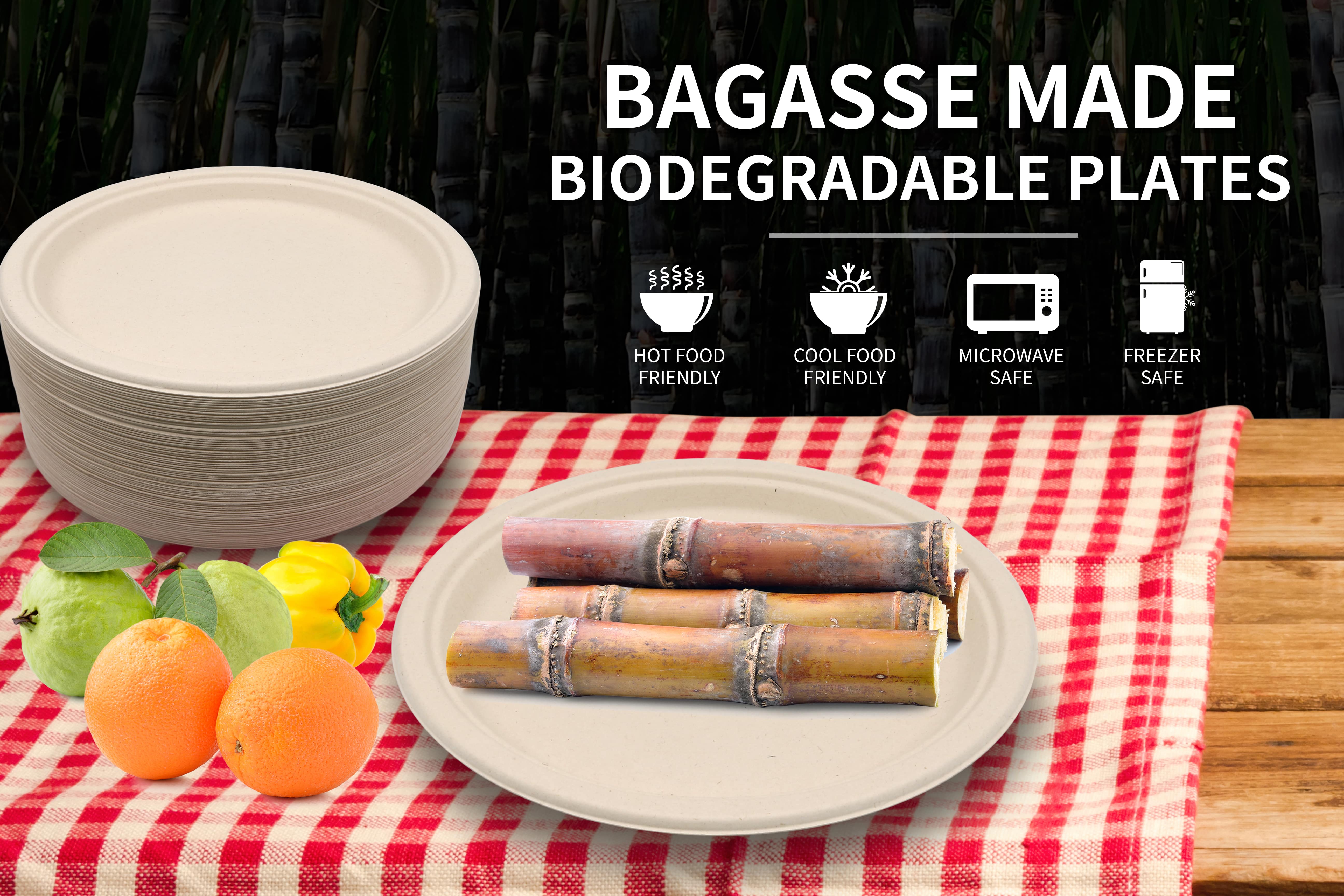
Subheading: A Sustainable Solution for Decreased Waste in Landfills Compostable lunch trays offer a remarkable solution to the mounting waste crisis plaguing our planet.
Unlike traditional plastic or foam trays, which are non-biodegradable and take centuries to decompose, compostable trays break down into organic matter within a matter of months. This property significantly reduces the amount of waste ending up in landfills, alleviating the strain on these already overflowing sites.
By diverting compostable lunch trays from landfills, we can mitigate environmental pollution and protect our fragile ecosystems. Moreover, the use of compostable trays has a positive impact on our carbon footprint.
The production process for conventional lunch trays involves significant energy consumption and greenhouse gas emissions due to the extraction and refinement of fossil fuel-based raw materials. In contrast, compostable trays are typically made from renewable resources such as plant-based materials like cornstarch or sugarcane bagasse.
These materials require less energy during production, leading to reduced carbon emissions. By adopting compostable alternatives, we can actively contribute to climate change mitigation efforts.
Additionally, by utilizing compostable lunch trays that come from sustainable resources instead of depleting non-renewable ones like petroleum-based plastics or polystyrene foam, we can help preserve natural resources for future generations. This shift towards sustainable packaging aligns with our responsibility as custodians of the Earth and promotes a more harmonious relationship between human activities and the environment.
Health Benefits for Consumers and Workers in the Food Industry
Subheading: A Safer Choice Ensuring Food Safety Compostable lunch trays not only benefit the environment but also positively impact human health by reducing exposure to harmful chemicals commonly found in non-compostable plastics used in food packaging.
Traditional plastic trays often contain various additives, such as phthalates and bisphenol A (BPA), which have been linked to adverse health effects, including hormone disruption and certain types of cancer. When heated or in contact with acidic or fatty foods, these chemicals can leach into the food, posing potential risks to consumers.
By choosing compostable lunch trays made from natural plant-based materials, we eliminate the need for hazardous chemical additives. These trays are free from harmful substances and provide a safer alternative for both consumers and workers in the food industry.
By removing the risk of toxin leaching, we can ensure that our food remains uncontaminated and safe for consumption. In addition to protecting consumer health, compostable lunch trays also safeguard the well-being of workers involved in food preparation and handling.
These workers are often in direct contact with packaging materials during their daily tasks. By replacing non-compostable plastic trays with their compostable counterparts, we minimize potential exposure to harmful chemicals during regular operations.
This not only benefits the employees' immediate well-being but also contributes to a healthier work environment overall. Compostable lunch trays offer compelling benefits by reducing environmental impact through decreased waste in landfills and lower carbon emissions during production.
They also deliver significant health advantages by avoiding harmful chemicals found in traditional plastics and minimizing risks of contamination through toxin leaching into food. Embracing these sustainable alternatives aligns with our collective responsibility to protect both our planet and human well-being for generations to come.
Types of Materials Used for Compostable Lunch Trays
Plant-based Materials
Compostable lunch trays made from plant-based materials have gained significant popularity due to their eco-friendly nature and ability to biodegrade. One prominent example is cornstarch-based trays, which are derived from the starch present in corn kernels.
These trays undergo a manufacturing process that involves extracting the starch, processing it into a resin-like substance, and then shaping it into trays through molding techniques. Cornstarch-based trays possess several notable properties that make them suitable for use as compostable lunch trays.
First and foremost, they exhibit impressive strength and rigidity, allowing them to hold food items securely without compromising structural integrity. Moreover, these trays are heat-resistant and can withstand moderate temperatures without warping or leaking.
This makes them suitable for serving both hot and cold meals. In terms of biodegradability rate, cornstarch-based trays typically break down within a few months in industrial composting facilities.
The high starch content makes these trays highly attractive to microorganisms responsible for decomposition, ensuring their efficient breakdown into compost without leaving harmful residues behind. However, it is important to note that these trays may take longer to degrade under home composting conditions due to the lower temperatures and less controlled environment.
Sugarcane Bagasse Trays
Sugarcane bagasse is another commonly used plant-based material in the production of compostable lunch trays. Bagasse refers to the fibrous residue left after extracting juice from sugarcane stalks during sugar production. This byproduct is then processed into a pulp-like substance which can be molded into various shapes, including lunch trays.
Compostable lunch trays made from sugarcane bagasse offer numerous advantages over traditional paper or plastic alternatives. Firstly, they are incredibly durable and resistant to grease or oil penetration.
This makes them ideal for serving a wide range of food items, including those with high moisture content or greasy textures. Additionally, these trays are microwave-safe, allowing for convenient reheating of meals without the need for transferring food onto separate plates.
One of the significant benefits of sugarcane bagasse trays is their environmental impact. By utilizing a byproduct that would otherwise go to waste, these trays contribute to the reduction of agricultural waste and promote sustainable practices.
Moreover, they are fully compostable and will break down into nutrient-rich compost within several months in industrial composting facilities. This closed-loop system ensures minimal environmental impact and allows for the cultivation of additional sugarcane to continue the cycle.
Other Innovative Materials
Mushroom-Based Packaging: Mycelium as an Alternative Material
In recent years, mushroom-based packaging has emerged as an innovative and sustainable alternative material for compostable lunch trays. Instead of using plant-based materials like cornstarch or sugarcane bagasse, mycelium—the root structure of mushrooms—is utilized to bind agricultural waste such as straw or husks together. The mycelium acts as a natural adhesive, creating a solid structure that can be molded into various forms.
Mycelium-based lunch trays offer several advantages over traditional materials. Firstly, they possess excellent insulation properties which help maintain optimal temperature for food items during transportation or storage.
Additionally, mycelium-based trays are lightweight yet sturdy enough to hold heavy meals without compromising structural integrity. Moreover, since mycelium is naturally antimicrobial and resistant to water absorption, these trays provide enhanced protection against contamination and leakage.
However, there are challenges associated with mushroom-based packaging that hinder its wider adoption. The production process is time-consuming as it involves growing mycelium on industrial-scale molds before it can be harvested and shaped into trays.
Furthermore, scaling up production remains a challenge due to the necessity of maintaining controlled environments and ensuring consistent quality. Despite these hurdles, the potential benefits of mycelium-based lunch trays make them an exciting and promising avenue for sustainable packaging solutions.
Algae-Based Packaging: Unique Properties of Algae and Potential Applications in Sustainable Packaging
Algae-based packaging presents an innovative approach to compostable lunch trays by utilizing the unique properties of algae. Algae, which are photosynthetic organisms found in aquatic environments, offer several advantages as a sustainable packaging material. They are abundant, grow rapidly, require minimal resources for cultivation, and do not compete with food production.
The use of algae in packaging offers various environmental benefits. Algae can absorb carbon dioxide during their growth process, helping to mitigate greenhouse gas emissions.
Additionally, they can purify water by absorbing pollutants such as nitrates and phosphates. When used in compostable lunch trays, algae-based materials have the potential to contribute to carbon sequestration while reducing pollution.
Despite these promising advantages, there is still ongoing research and development required to harness the full potential of algae-based packaging. Challenges include improving material strength and durability while maintaining biodegradability properties.
Additionally, scaling up production methods that ensure consistency and cost-effectiveness remains a key area for further exploration. Compostable lunch trays made from plant-based materials such as cornstarch or sugarcane bagasse offer sustainable alternatives to traditional paper or plastic trays.
Moreover, innovative materials like mycelium or algae hold immense promise in terms of environmental impact reduction and resource conservation. By understanding the properties and advantages of these diverse materials, we can pave the way for a more sustainable future in the food industry.
Commercial Availability and Usage
The Rise of Major Manufacturers
Compostable lunch trays have seen a surge in popularity over recent years, leading to the emergence of major manufacturers dedicated to producing sustainable packaging solutions. Companies such as Eco-Products, World Centric, and Vegware have become household names in the realm of eco-friendly food packaging.
These manufacturers offer a wide range of compostable lunch tray options, made from various plant-based materials like cornstarch and sugarcane bagasse. Their commitment to sustainability is reflected not only in their products but also in their production processes, which prioritize minimal energy consumption and carbon emissions.
A Growing Trend in Schools and Cafeterias
The adoption of compostable lunch trays has gained significant traction in schools and cafeterias across the globe. Recognizing the environmental benefits and health advantages for students, educational institutions are actively transitioning from traditional plastic or styrofoam trays to compostable alternatives.
This shift aligns with broader sustainability initiatives that many schools have embraced to educate students about eco-conscious practices. Cafeterias are also enthusiastically joining the movement towards compostability.
From large-scale corporate cafeterias to small local eateries, establishments are increasingly realizing the importance of incorporating sustainable packaging solutions into their operations. By using compostable lunch trays, these establishments demonstrate their commitment not only to reducing waste but also to providing healthier options for their customers.
Conclusion
In a world grappling with environmental challenges caused by excessive plastic waste, compostable lunch trays offer a glimmer of hope. The commercial availability and growing usage of these trays indicate a paradigm shift toward more sustainable practices within the food industry.
With major manufacturers leading the charge and schools embracing this positive change, we can anticipate an even greater adoption rate among other sectors. By choosing compostable lunch trays over traditional plastic or styrofoam, we not only reduce waste in landfills but also prioritize the health and safety of consumers.
This simple yet impactful choice allows us to contribute to a greener future, where sustainability is at the forefront of our actions. So let us embrace compostable lunch trays, not just as a practical solution, but as a symbol of our commitment to preserving our planet for generations to come.



